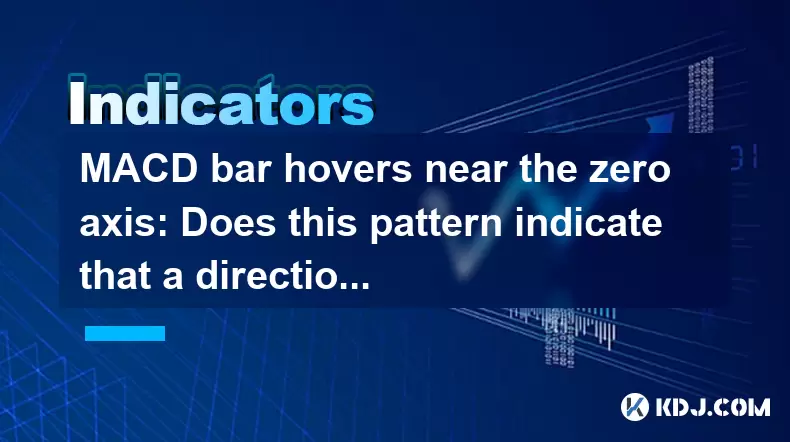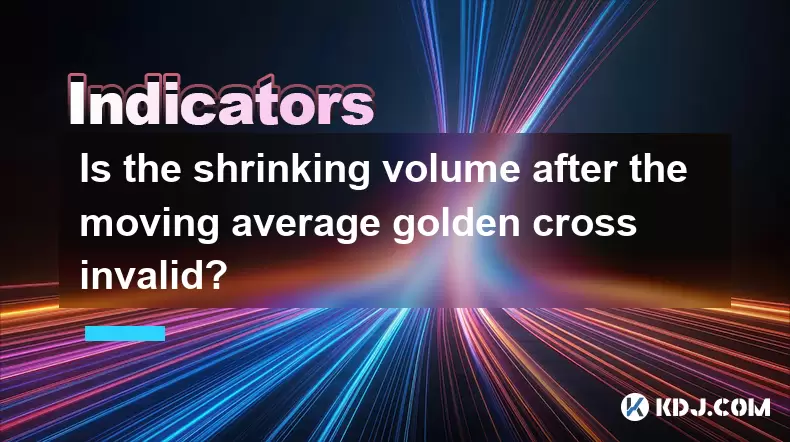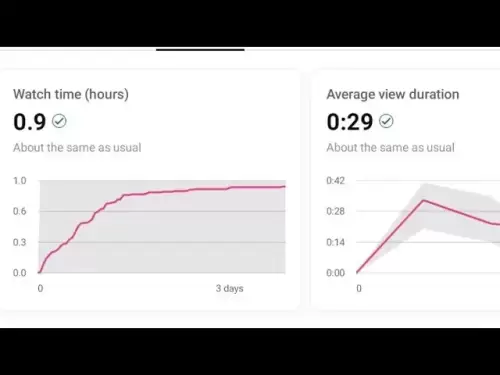-
 Bitcoin
Bitcoin $103,456.1111
0.49% -
 Ethereum
Ethereum $2,414.9631
0.02% -
 Tether USDt
Tether USDt $1.0006
0.05% -
 XRP
XRP $2.1083
0.24% -
 BNB
BNB $634.8760
-0.76% -
 Solana
Solana $139.8437
1.94% -
 USDC
USDC $0.9998
-0.01% -
 TRON
TRON $0.2737
0.97% -
 Dogecoin
Dogecoin $0.1602
0.20% -
 Cardano
Cardano $0.5737
1.08% -
 Hyperliquid
Hyperliquid $32.9779
-2.54% -
 Bitcoin Cash
Bitcoin Cash $474.8886
-1.80% -
 Sui
Sui $2.6272
-1.99% -
 Chainlink
Chainlink $12.4878
0.14% -
 UNUS SED LEO
UNUS SED LEO $8.9234
0.35% -
 Stellar
Stellar $0.2411
-0.18% -
 Avalanche
Avalanche $17.0274
-0.70% -
 Toncoin
Toncoin $2.8936
-1.11% -
 Shiba Inu
Shiba Inu $0.0...01112
-0.58% -
 Litecoin
Litecoin $82.6982
1.33% -
 Hedera
Hedera $0.1423
-0.05% -
 Monero
Monero $314.8455
3.26% -
 Ethena USDe
Ethena USDe $1.0006
0.01% -
 Polkadot
Polkadot $3.4043
1.14% -
 Dai
Dai $0.9999
0.01% -
 Bitget Token
Bitget Token $4.2848
-0.13% -
 Uniswap
Uniswap $6.8748
-5.45% -
 Pepe
Pepe $0.0...09661
0.52% -
 Pi
Pi $0.5359
1.19% -
 Aave
Aave $242.9168
-1.03%
MACD bar hovers near the zero axis: Does this pattern indicate that a direction is about to be chosen?
When the MACD bar hovers near the zero axis, it signals market indecision and a potential breakout, prompting traders to seek confirmation from other indicators.
May 27, 2025 at 10:14 pm

The Moving Average Convergence Divergence (MACD) is a popular technical analysis tool used by traders in the cryptocurrency market to identify potential trend changes and momentum shifts. When the MACD bar hovers near the zero axis, it often signals a period of indecision in the market. This article will delve into what this pattern means and whether it indicates that a direction is about to be chosen.
Understanding the MACD Indicator
The MACD indicator consists of two lines: the MACD line and the signal line, along with a histogram that represents the difference between these two lines. The MACD line is calculated by subtracting the 26-period Exponential Moving Average (EMA) from the 12-period EMA. The signal line is a 9-period EMA of the MACD line. The histogram, or MACD bar, provides a visual representation of the momentum and direction of the asset's price.
The Zero Axis and MACD Bars
The zero axis on the MACD chart is a crucial level. When the MACD line crosses above the zero axis, it is generally considered a bullish signal, indicating that the short-term momentum is stronger than the long-term momentum. Conversely, when the MACD line crosses below the zero axis, it is seen as a bearish signal, suggesting that the long-term momentum is stronger.
The MACD bar hovering near the zero axis indicates that the difference between the MACD line and the signal line is minimal. This situation reflects a market that is in a state of equilibrium, where neither the bulls nor the bears have a clear advantage. The bars can be either positive or negative, but they are very close to the zero line, suggesting that the market is in a state of indecision.
Does Hovering Near the Zero Axis Indicate an Imminent Direction?
When the MACD bar hovers near the zero axis, it suggests that the market is poised for a potential breakout. This pattern often precedes a significant move in either direction. However, it does not guarantee that a direction will be chosen immediately. Instead, it signals that the market is at a critical juncture, and traders should be prepared for a potential shift in momentum.
Traders often look for confirmation signals when the MACD bar is near the zero axis. These can include other technical indicators like the Relative Strength Index (RSI), volume indicators, or price action patterns. If additional indicators align with the potential direction suggested by the MACD, it can increase the likelihood of a breakout.
Trading Strategies When MACD Bars Hover Near Zero
When the MACD bar hovers near the zero axis, traders can employ several strategies to capitalize on potential breakouts. Here are some approaches:
Breakout Strategy: Traders can wait for the MACD bar to move decisively away from the zero axis. If the bar moves above zero, it may signal a bullish breakout, and traders can consider going long. Conversely, if the bar moves below zero, it may indicate a bearish breakout, prompting traders to go short.
Reversal Strategy: Some traders look for potential reversals when the MACD bar is near the zero axis. If the price has been in a downtrend and the MACD bar starts to hover near zero, it might signal that the downtrend is losing momentum. Traders can then look for bullish reversal patterns to enter long positions. Similarly, if the price has been in an uptrend, a MACD bar near zero might suggest that the uptrend is weakening, and traders can look for bearish reversal patterns to enter short positions.
Range Trading: When the MACD bar hovers near the zero axis, it can also indicate a period of consolidation or range-bound trading. Traders can use this information to trade within the established range, buying near the lower end of the range and selling near the upper end.
Using Additional Indicators for Confirmation
While the MACD bar hovering near the zero axis can be a powerful signal, it is often beneficial to use additional indicators to confirm potential breakouts or reversals. Here are some commonly used indicators that can complement the MACD:
Relative Strength Index (RSI): The RSI measures the speed and change of price movements. If the RSI is in overbought territory (above 70) and the MACD bar is near zero, it might suggest a bearish reversal. Conversely, if the RSI is in oversold territory (below 30) and the MACD bar is near zero, it could indicate a bullish reversal.
Volume Indicators: High trading volume can confirm a breakout. If the MACD bar moves away from the zero axis and is accompanied by a surge in volume, it increases the likelihood of a sustained move in that direction.
Price Action Patterns: Patterns such as double tops, double bottoms, head and shoulders, and triangles can provide additional confirmation. For example, if the MACD bar is near zero and a bullish price action pattern forms, it can increase the confidence in a potential upward breakout.
Practical Example: Analyzing a Cryptocurrency Chart
To illustrate how to interpret the MACD bar hovering near the zero axis, let's consider a hypothetical example using a Bitcoin (BTC) chart.
Step 1: Open a trading platform or charting software that supports technical analysis, such as TradingView or MetaTrader.
Step 2: Load the Bitcoin chart and apply the MACD indicator. Ensure that the MACD settings are set to the standard values (12, 26, 9).
Step 3: Observe the MACD bar. If the bars are hovering near the zero axis, it indicates a period of market indecision.
Step 4: Look for additional indicators to confirm potential breakouts or reversals. For example, check the RSI to see if it is in overbought or oversold territory.
Step 5: Monitor price action patterns. If a bullish pattern forms while the MACD bar is near zero, it could signal an impending upward breakout.
Step 6: Set up trade alerts or watchlists to stay informed about any significant moves in the MACD bar or price action.
Risk Management When Trading MACD Patterns
When trading based on the MACD bar hovering near the zero axis, it is crucial to implement effective risk management strategies. Here are some key considerations:
Stop-Loss Orders: Always use stop-loss orders to limit potential losses. Place the stop-loss at a level that invalidates your trade thesis, such as below a recent low for a long position or above a recent high for a short position.
Position Sizing: Determine the appropriate position size based on your risk tolerance and account balance. Avoid risking more than a small percentage of your capital on any single trade.
Diversification: Do not put all your capital into a single trade or asset. Diversify your portfolio to spread risk across different cryptocurrencies and trading strategies.
Continuous Monitoring: Keep a close eye on the market and be ready to adjust your positions based on new information or changes in market conditions.
Frequently Asked Questions
Q1: Can the MACD bar hovering near the zero axis be used as a standalone signal for trading?
A1: While the MACD bar hovering near the zero axis can provide valuable insights into market indecision and potential breakouts, it is generally not recommended to use it as a standalone signal. Traders should seek confirmation from other technical indicators and price action patterns to increase the reliability of their trading decisions.
Q2: How long can the MACD bar remain near the zero axis before a direction is chosen?
A2: There is no fixed duration for how long the MACD bar can hover near the zero axis. It can range from a few hours to several days or even weeks, depending on market conditions. Traders should remain patient and wait for clear signals before making trading decisions.
Q3: Are there specific cryptocurrencies that are more responsive to MACD signals?
A3: The responsiveness of cryptocurrencies to MACD signals can vary. Generally, more liquid and widely traded cryptocurrencies like Bitcoin and Ethereum tend to have more reliable MACD signals due to higher trading volumes and market participation. However, traders should always conduct their own analysis and consider the specific characteristics of each cryptocurrency.
Q4: How does the MACD bar near the zero axis differ from other MACD patterns?
A4: The MACD bar hovering near the zero axis differs from other MACD patterns in that it specifically indicates a period of market indecision and potential for a breakout. Other common MACD patterns include bullish and bearish crossovers, divergences, and centerline crossovers, each providing different signals about market momentum and trend direction.
Disclaimer:info@kdj.com
The information provided is not trading advice. kdj.com does not assume any responsibility for any investments made based on the information provided in this article. Cryptocurrencies are highly volatile and it is highly recommended that you invest with caution after thorough research!
If you believe that the content used on this website infringes your copyright, please contact us immediately (info@kdj.com) and we will delete it promptly.
- Ruvi AI: The Audited Token Poised to Outshine Shiba Inu
- 2025-06-22 10:25:12
- Dypians, DeFi, and Sei Network: A Deep Dive into the Latest Trends
- 2025-06-22 10:25:12
- Hacken Security Breach Highlights Risks Across Ethereum and BSC
- 2025-06-22 08:25:12
- SHIB Price, Forecasts, Timelines: Will Shiba Inu Ever Reach the 'One-Cent Dream'?
- 2025-06-22 08:25:12
- Avalanche vs. Ruvi AI: Why Smart Money's on This Audited Token
- 2025-06-22 08:45:12
- Bitcoin Demand on Pause: What's Next for the Crypto King?
- 2025-06-22 08:45:12
Related knowledge

Does the second surge in the RSI overbought zone induce more?
Jun 22,2025 at 08:35am
Understanding the RSI Overbought ZoneThe Relative Strength Index (RSI) is a momentum oscillator commonly used in technical analysis to measure the speed and change of price movements. It ranges from 0 to 100, with values above 70 typically considered overbought and values below 30 considered oversold. When the RSI enters the overbought zone for the firs...

Does the sudden contraction of ATR indicate the end of the trend?
Jun 20,2025 at 11:14pm
Understanding ATR and Its Role in Technical AnalysisThe Average True Range (ATR) is a technical indicator used to measure market volatility. Developed by J. Welles Wilder, ATR calculates the average range of price movement over a specified period, typically 14 periods. It does not indicate direction—only volatility. Traders use ATR to gauge how much an ...

Is it invalid if the DMI crosses but the ADX does not expand?
Jun 21,2025 at 09:35am
Understanding the DMI and ADX RelationshipIn technical analysis, the Directional Movement Index (DMI) consists of two lines: +DI (Positive Directional Indicator) and -DI (Negative Directional Indicator). These indicators are used to determine the direction of a trend. When +DI crosses above -DI, it is often interpreted as a bullish signal, while the opp...

How to filter false signals when the SAR indicator frequently flips?
Jun 21,2025 at 08:43pm
Understanding the SAR Indicator and Its BehaviorThe SAR (Stop and Reverse) indicator is a popular technical analysis tool used in cryptocurrency trading to identify potential reversals in price movement. It appears as a series of dots placed either above or below the price chart, signaling bullish or bearish trends. When the dots are below the price, it...

Is the trend continuation when the Williams indicator is oversold but there is no rebound?
Jun 20,2025 at 11:42pm
Understanding the Williams %R IndicatorThe Williams %R indicator, also known as the Williams Percent Range, is a momentum oscillator used in technical analysis to identify overbought and oversold levels in price movements. It typically ranges from 0 to -100, where values above -20 are considered overbought and values below -80 are considered oversold. T...

Is the shrinking volume after the moving average golden cross invalid?
Jun 22,2025 at 10:42am
Understanding the Moving Average Golden Cross in CryptocurrencyIn the world of cryptocurrency trading, technical indicators play a crucial role in decision-making. One such indicator is the moving average golden cross, which occurs when a short-term moving average crosses above a long-term moving average, typically signaling a bullish trend. This event ...

Does the second surge in the RSI overbought zone induce more?
Jun 22,2025 at 08:35am
Understanding the RSI Overbought ZoneThe Relative Strength Index (RSI) is a momentum oscillator commonly used in technical analysis to measure the speed and change of price movements. It ranges from 0 to 100, with values above 70 typically considered overbought and values below 30 considered oversold. When the RSI enters the overbought zone for the firs...

Does the sudden contraction of ATR indicate the end of the trend?
Jun 20,2025 at 11:14pm
Understanding ATR and Its Role in Technical AnalysisThe Average True Range (ATR) is a technical indicator used to measure market volatility. Developed by J. Welles Wilder, ATR calculates the average range of price movement over a specified period, typically 14 periods. It does not indicate direction—only volatility. Traders use ATR to gauge how much an ...

Is it invalid if the DMI crosses but the ADX does not expand?
Jun 21,2025 at 09:35am
Understanding the DMI and ADX RelationshipIn technical analysis, the Directional Movement Index (DMI) consists of two lines: +DI (Positive Directional Indicator) and -DI (Negative Directional Indicator). These indicators are used to determine the direction of a trend. When +DI crosses above -DI, it is often interpreted as a bullish signal, while the opp...

How to filter false signals when the SAR indicator frequently flips?
Jun 21,2025 at 08:43pm
Understanding the SAR Indicator and Its BehaviorThe SAR (Stop and Reverse) indicator is a popular technical analysis tool used in cryptocurrency trading to identify potential reversals in price movement. It appears as a series of dots placed either above or below the price chart, signaling bullish or bearish trends. When the dots are below the price, it...

Is the trend continuation when the Williams indicator is oversold but there is no rebound?
Jun 20,2025 at 11:42pm
Understanding the Williams %R IndicatorThe Williams %R indicator, also known as the Williams Percent Range, is a momentum oscillator used in technical analysis to identify overbought and oversold levels in price movements. It typically ranges from 0 to -100, where values above -20 are considered overbought and values below -80 are considered oversold. T...

Is the shrinking volume after the moving average golden cross invalid?
Jun 22,2025 at 10:42am
Understanding the Moving Average Golden Cross in CryptocurrencyIn the world of cryptocurrency trading, technical indicators play a crucial role in decision-making. One such indicator is the moving average golden cross, which occurs when a short-term moving average crosses above a long-term moving average, typically signaling a bullish trend. This event ...
See all articles
























































































